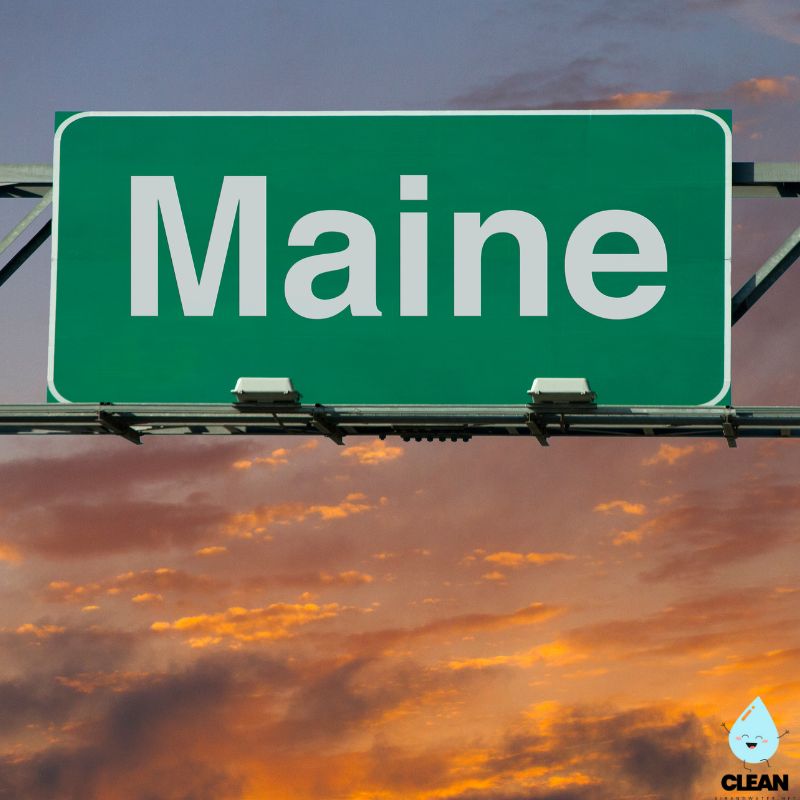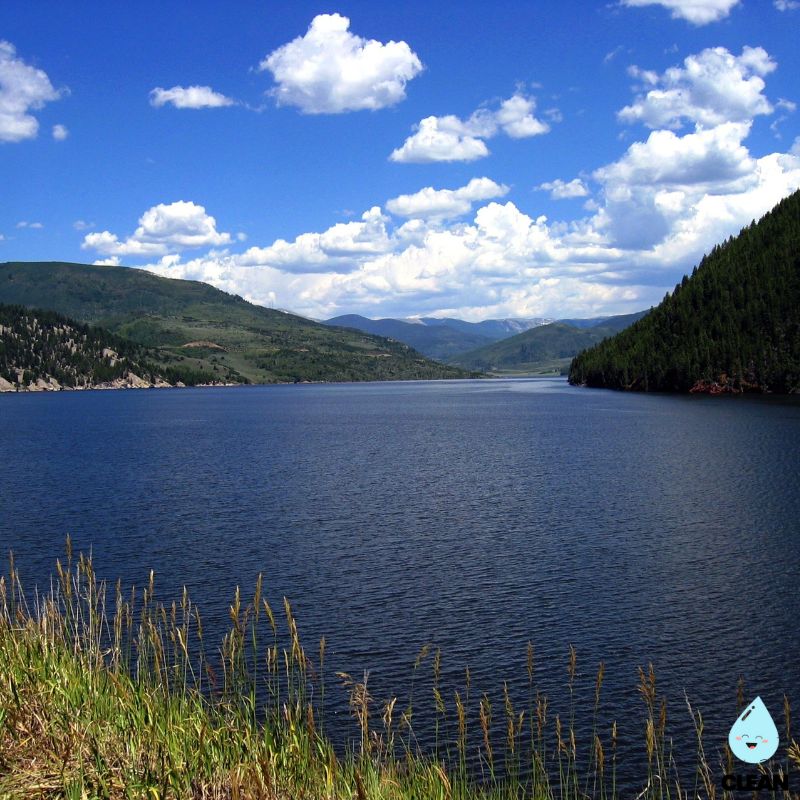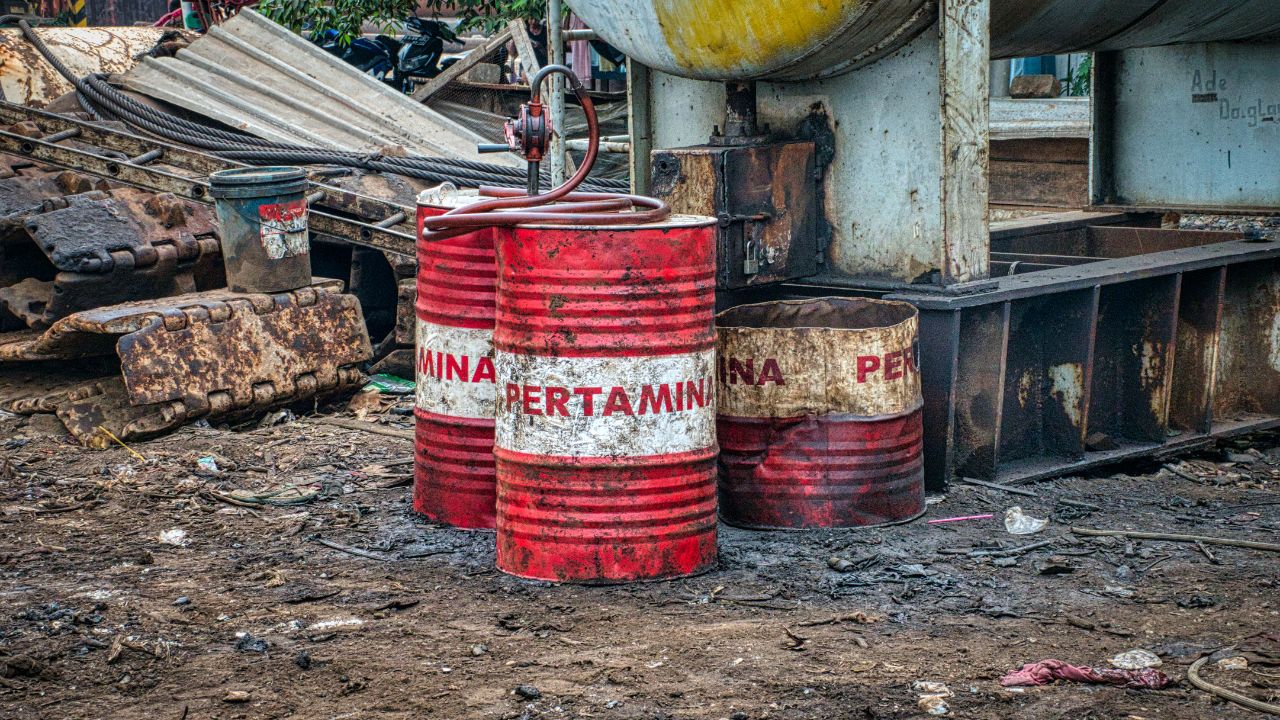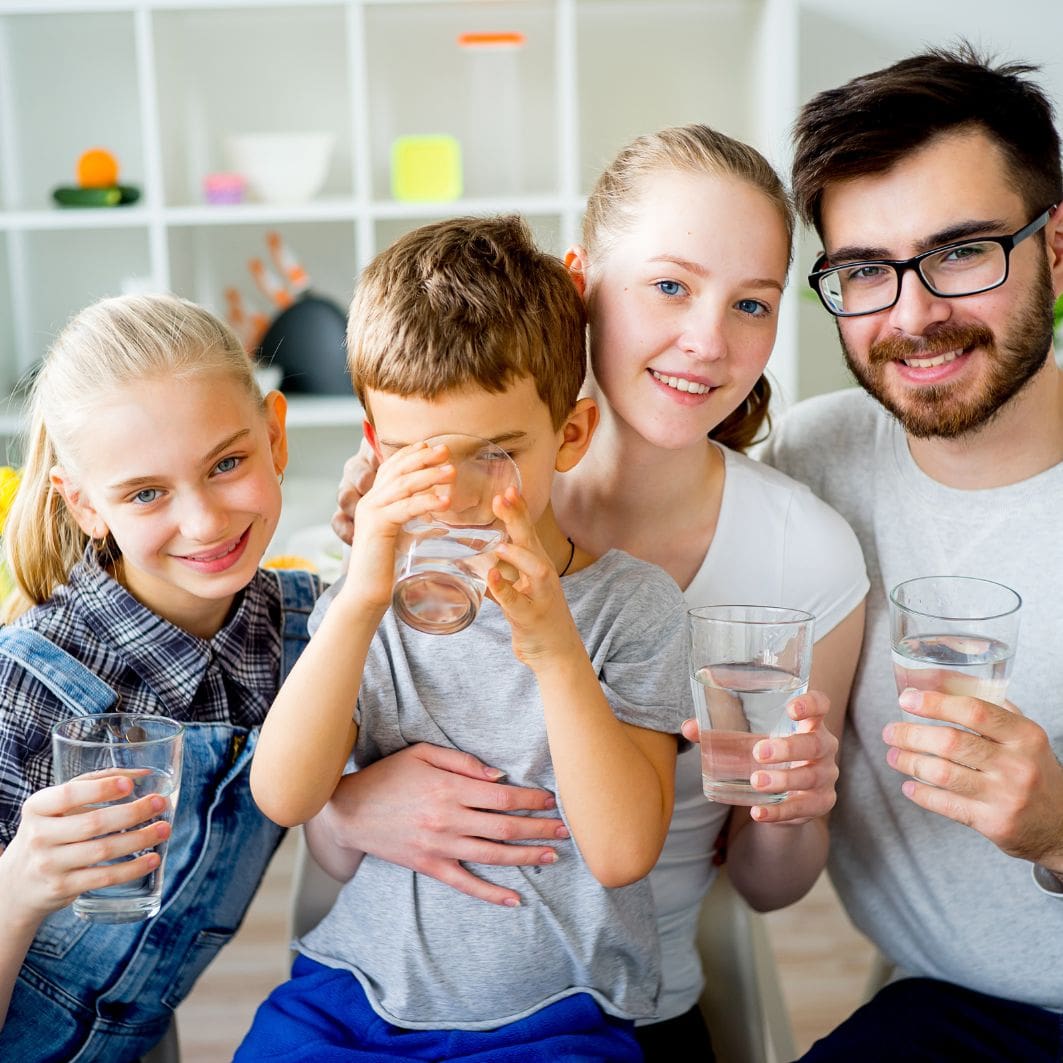Maine Water Quality at a Glance
significant concerns
Is Maine Water Safe to Drink?
Generally Yes, With Significant Caution – Most Maine water systems meet federal standards, but the state faces significant PFAS contamination from historical sludge application affecting 576 private wells. Additional concerns include disinfection byproducts and chromium-6. The state has installed 495 whole-home filtration systems and is conducting an extensive $20 million investigation into PFAS contamination from land application of sludge and septage.
⚠️ Key Concerns for Maine Residents
- PFAS “Forever Chemicals”: 576 private wells exceed Maine’s interim 20 ppt drinking water standard, with 495 filtration systems installed
- Sludge Application Legacy: 1,066 sites investigated where sludge/septage was applied, affecting soil and groundwater across multiple counties
- Chromium-6: Detected at various concentrations in drinking water across Maine utilities above health guidelines
- Disinfection Byproducts: Trihalomethanes and haloacetic acids detected in public water systems from chlorine treatment processes
Read the full report below for detailed analysis, county-specific data, and actionable recommendations for Maine residents.
Maine – Vacationland’s Water Challenge – Water Quality Report 2025: PFAS Testing, Infrastructure Concerns & Safety across your state
Maine’s water infrastructure serves approximately 1.39 million residents across a diverse landscape from dense coastal communities to rural inland areas. The state operates through a network of approximately 2,800 public water systems, with major utilities like Portland Water District serving over 200,000 customers and smaller rural systems providing essential services to remote communities. Maine’s abundant water resources include over 5,785 lakes, 32,000 miles of rivers and streams, plus groundwater aquifers that supply 94% of public water systems, though surface water utilities provide 48% of consumption.
Despite having some of the nation’s best natural water sources, Maine faces significant infrastructure challenges. According to the American Society of Civil Engineers’ 2024 Infrastructure Report Card, Maine’s overall infrastructure received a C grade, with drinking water infrastructure earning a C- grade, highlighting aging water mains, funding shortfalls, and emerging PFAS contamination concerns. The state has received nearly $194 million in federal infrastructure investments from the Biden-Harris Administration’s Bipartisan Infrastructure Law since 2022 to address these challenges, focusing on drinking water safety, PFAS treatment, and lead service line replacement. Maine’s proactive approach to PFAS regulation, with some of the nation’s strictest standards at 20 parts per trillion for six PFAS compounds, demonstrates the state’s commitment to protecting public health while addressing legacy contamination from sludge and septage land application.

Maine Water Quality: Current Status (2024-2025)
Statewide Compliance and Testing
- Overall Compliance: The majority of Maine’s approximately 2,800 public water systems meet federal Safe Drinking Water Act standards, though 576 private drinking water wells have exceeded Maine’s safety standards of 20 parts per trillion for PFAS compounds.
- PFAS Monitoring: Maine has established some of the nation’s strictest PFAS regulations, requiring all community water systems and schools/daycares to test for PFAS, with ongoing investigations at 1,066 potential contamination sites where sludge and septage were historically land applied.
- Infrastructure Investment: Nearly $194 million in federal funding through the Bipartisan Infrastructure Law has been allocated to Maine since 2022 for water infrastructure improvements, including $28.5 million announced in 2024 for PFAS treatment and system upgrades.
Major Water Sources and Challenges
- Surface Water Systems: Only 79 surface water supplies serve 48% of Maine’s population, including major utilities like Portland Water District drawing from protected watersheds and lake systems.
- Groundwater Dominance: 94% of Maine’s public water systems rely on groundwater from springs and wells, with natural geologic protection but vulnerability to land-applied contaminants including PFAS from historical sludge and septage spreading.
- Aging Infrastructure: Water utilities are missing the 1% annual replacement rate for water mains, effectively adding 10-50 years to the existing 100-year replacement cycle, with $60 million per year needed over the next 20 years.
Emerging Contaminant Response
- PFAS Regulation Leadership: Maine’s interim standard of 20 parts per trillion for six PFAS compounds is more stringent than federal requirements, with the state currently reviewing EPA’s 2024 regulations to adopt rules at least as strict.
- Contamination Investigation: A comprehensive statewide investigation has identified 576 private wells with PFAS levels above state standards, with 495 water filtration systems installed to protect affected residents.
- Source Control Measures: Maine has implemented strict controls on land application of sludge and septage, completed investigations at over 700 sites, and established a Land Application Contaminant Monitoring Fund for ongoing testing and remediation.
Rural and Disadvantaged Communities
- Infrastructure Disparities: Rural water systems face challenges with aging infrastructure, limited technical capacity, and higher per-capita costs, with an estimated annual funding shortfall of $27 million for necessary improvements.
- Targeted Federal Support: Dedicated funding through the Clean Water and Drinking Water State Revolving Funds provides grants and low-interest loans prioritizing disadvantaged communities and PFAS remediation needs.
- Technical Assistance Programs: Maine’s Drinking Water Program provides enhanced support to help smaller systems navigate complex regulatory requirements, secure funding, and implement necessary treatment technologies.
Looking Forward: 2025-2030
Maine’s water quality landscape continues evolving as utilities prepare for federal PFAS regulations taking effect in 2029. The state’s proactive approach to PFAS monitoring and strict interim standards position Maine as a national leader in emerging contaminant response. However, successful long-term improvements require sustained investment to address aging infrastructure that threatens system reliability. With substantial federal infrastructure funding and strong regulatory oversight, Maine is building resilience into its water systems while addressing the legacy of sludge and septage application that has historically challenged water quality in rural communities.
Recommendations for Maine Residents

Know Your Water Source
Contact your water utility to request annual water quality reports and ask about PFAS testing results. Visit Maine’s Drinking Water Program website to access your local system’s testing data and understand any contaminants of concern in your area.

Support Infrastructure Investment
Stay informed about local water infrastructure needs and support utility rate structures that enable necessary improvements. Attend public meetings when utilities discuss infrastructure upgrades and PFAS treatment investments.

Consider PFAS-Certified Filtration
For areas with known PFAS contamination, consider NSF-certified activated carbon or reverse osmosis filters specifically tested for PFAS removal. These can provide additional protection while utilities implement treatment upgrades.

Report Water Quality Concerns
Contact your local water utility immediately for taste, odor, or color concerns. Report suspected contamination to Maine’s Drinking Water Program at (207) 287-2070 for investigation and follow-up.

Practice Water Conservation
Support Maine’s water sustainability by implementing conservation measures like efficient irrigation, rainwater harvesting, and low-flow fixtures. Reducing demand helps utilities maintain system reliability and affordability.
Maine Cities We Cover
Portland Water Quality
Comprehensive analysis of Portland Water District, serving over 200,000 customers with water from the Bull Run Watershed and Columbia South Shore Well Field. Includes information on water sources, treatment processes, infrastructure modernization, and PFAS monitoring.
Frequently Asked Questions
Is Maine’s tap water safe to drink?
Most of Maine’s public water systems meet federal drinking water standards and are safe for consumption. However, some areas have elevated PFAS levels that exceed Maine’s strict 20 ppt standard.
Maine has some of the nation’s strictest PFAS regulations, requiring comprehensive testing across all community water systems. About 576 private wells have exceeded state standards for PFAS. Water utilities are implementing advanced treatment technologies and the state has received nearly $194 million in federal funding to address emerging contaminants and infrastructure needs. Residents should review their utility’s annual water quality report and stay informed about local conditions.
What are PFAS chemicals and why are they a concern in Maine?
PFAS (per- and polyfluoroalkyl substances) are synthetic “forever chemicals” that don’t break down naturally in the environment or human body.
Maine has been significantly impacted by PFAS contamination due to decades of land application of sludge and septage containing these chemicals. PFAS have been linked to cancer, liver damage, immune system effects, and other health concerns. Maine established an interim drinking water standard of 20 parts per trillion for six PFAS compounds, stricter than federal requirements. The state has completed investigations at 1,066 sites and identified 576 wells with contamination above standards, installing 495 filtration systems to protect affected residents.
How can I find out about my local water quality?
Maine residents can access comprehensive water quality information through several resources:
• Annual Water Quality Reports: Contact your water utility directly for their Consumer Confidence Report, which details all testing results and any violations or concerns
• Maine Drinking Water Program: Visit the state’s online database to access testing results and compliance information for your local water system
• PFAS Testing Data: Maine requires all community water systems and schools/daycares to test for PFAS and makes results publicly available
• EWG Tap Water Database: Use your zip code to search for contaminants detected in your local water system and get filter recommendations
Why does Maine have water infrastructure challenges?
Maine’s water infrastructure faces several interconnected challenges:
Aging Systems: Water utilities are missing the 1% annual replacement rate for water mains, adding 10-50 years to the typical 100-year replacement cycle
Funding Gaps: The state needs $60 million per year over the next 20 years for drinking water improvements, with an estimated annual shortfall of $27 million
Rural Challenges: Smaller, rural water systems face higher per-capita costs and limited technical capacity to implement complex treatment technologies
PFAS Legacy: Decades of land application of contaminated sludge and septage have created widespread PFAS contamination requiring expensive remediation
The state is addressing these challenges through federal infrastructure investments, improved regulatory oversight, and partnerships with utilities to prioritize the most critical improvements.
Quality News About Your Water
Get the comprehensive water quality news coverage you need with our dedicated US Water News Service. From coast to coast, we deliver in-depth reporting and expert analysis on PFAS contamination, EPA regulatory changes, infrastructure developments, and emerging water safety issues affecting communities nationwide. While mainstream media only covers the biggest stories, we provide the detailed, ongoing coverage that helps you understand the full scope of America’s water challenges. Whether you’re a concerned citizen, water professional, or community leader, our daily updates and analytical insights keep you informed about the issues that matter most to public health and environmental safety.
Contaminants of Concern

PFAS “Forever Chemicals”
Source: Land application of contaminated sludge and septage, firefighting foam use at airports and military facilities, industrial discharges, and consumer products including food packaging
Health Effects: Linked to kidney and testicular cancer, liver damage, immune system suppression, high cholesterol, and developmental effects in children
Current Status: 576 private wells exceed Maine’s 20 ppt standard for six PFAS compounds, with 495 filtration systems installed to protect residents Maine Standards: 20 ppt for six PFAS compounds (alone or in combination), stricter than federal requirements

Sludge and Septage Legacy Contamination
Source: Historical land application of municipal sludge and septage on agricultural fields, with investigations at 1,066 sites statewide where contaminated materials were spread over decades
Health Effects: Varies by contaminant but includes potential cardiovascular effects, liver impacts, and increased cancer risk from prolonged exposure to contaminated drinking water and food
Current Status: 155 farms have been engaged by the state’s PFAS Response Program, with 66 farms exceeding soil screening levels and 35 farms exceeding drinking water standards Regulatory Response: Maine banned land application of sludge in 2022 and established a $20 million investigation program
Please read – our information
The information presented on cleanairandwater.net is compiled from official water quality reports, trusted news sources, government websites, and public health resources. While we strive for accuracy and thoroughness in our presentations, we are not scientists, engineers, or qualified water quality professionals.
Our mission is to present water quality information in an accessible, real-world format that helps people understand what’s in their water and make informed decisions about their health and safety. We believe that complex environmental information should be available to everyone in a format that’s easy to understand.
We make every effort to ensure our content is current and accurate, but we cannot guarantee that all information is complete or error-free. This website should not replace official communications from your local water utility or health department. We always recommend consulting official sources for the most up-to-date information regarding your specific water system.
Clean Air and Water is not liable for any unintentional errors, omissions, or outdated information. The content on this site is provided for informational purposes only and should not be considered professional advice.


